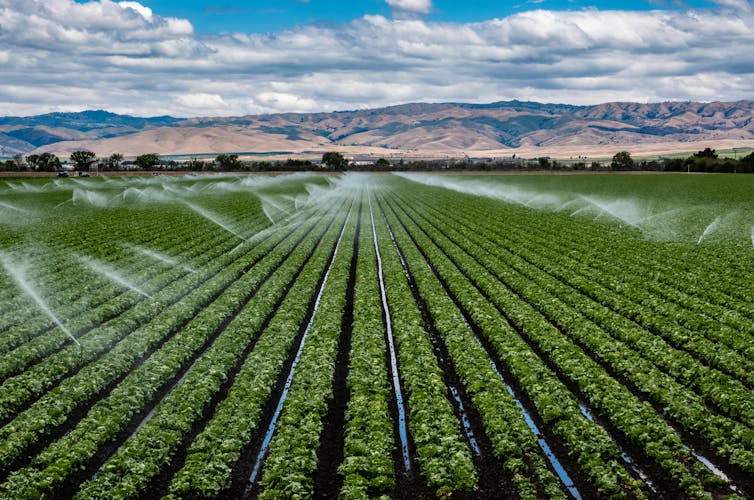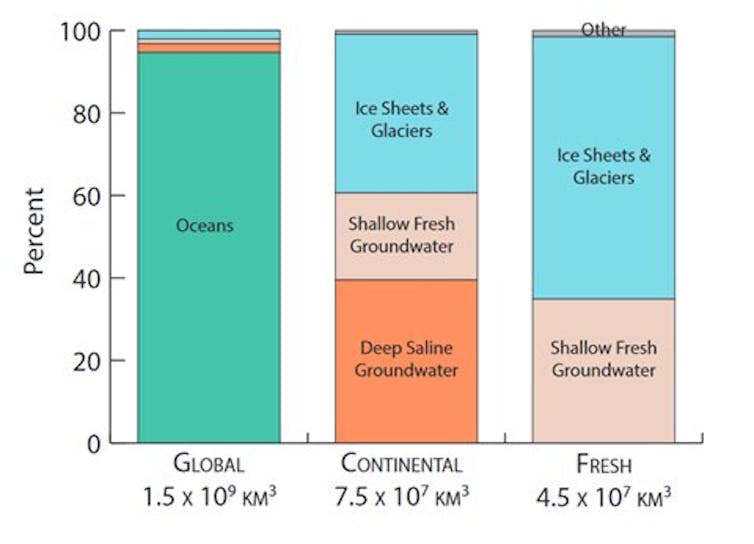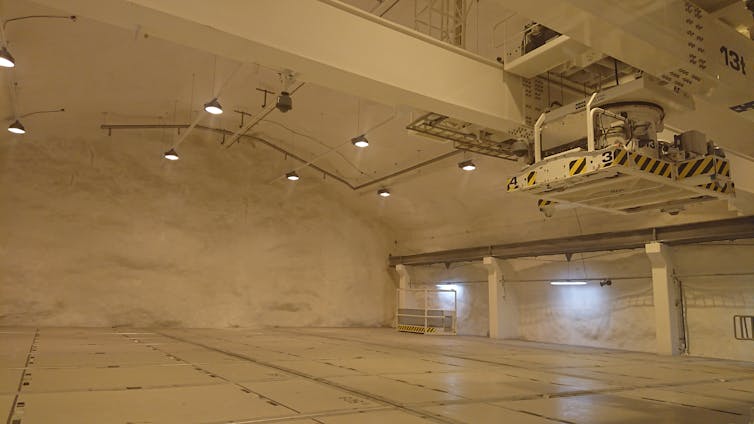
Grant Ferguson, University of Saskatchewan and Jennifer C. McIntosh, University of Arizona
Outside of the world’s oceans, groundwater is one of the largest stores of water on Earth. While it might appear that the planet is covered in vast lakes and river systems, they make up only 0.01 per cent of the Earth’s water. In fact, we now know there is 100 times as much groundwater on this planet as there is freshwater on its surface.
Groundwater is the water contained beneath the Earth’s surface. It’s stored in the tiny cracks found within rock and the spaces between soil particles. It can extend deep into the subsurface, at least as much as 10 kilometres.
As groundwater researchers, we’re interested in how governments and industries might use these extensive groundwater reservoirs, such as for storing liquid waste and carbon dioxide. But groundwater may also have environmental functions that have not yet been revealed — this body of water remains hidden, with very few windows available for us to explore it.
One of Earth’s largest stores of water
While scientists have known for at least five decades that groundwater makes up a large fraction of the world’s water, estimated volumes of groundwater had focused on the upper two kilometres of the Earth’s crust.
A recent analysis that looked 10 kilometres beneath the surface found that the true volume is likely twice as large. These new estimates mean that groundwater is the largest continental reservoir of water — even more than all the water contained in the continental ice sheets in Antarctica and Greenland, which were long thought to be the Earth’s second-largest stores of water.

Previous groundwater estimates arrived at lower volumes because they only considered groundwaters at shallower depths. But permeable rocks are found down to at least 10 kilometres below the Earth’s surface and can hold water in cracks and pores. While these spaces only account for a small volume of the rock mass, they add up to nearly 44 million cubic kilometres of water in the upper 10 kilometres of rock, enough to fill more than 10,000 Grand Canyons.
Groundwater matters because it can provide reliable water for homes, irrigation and industry. But these wells tend to be less than 100 metres deep and they rarely approach one kilometre. Most of the groundwater contained in the rock below that is saline, sometimes several times saltier than seawater, and unusable for drinking water or irrigation.
Scientists know much less about the groundwater stored more than one kilometre deep. Yet they have determined that rain and snow falling in North America can circulate to depths of one to four kilometres. Beneath these depths there is only ancient water with other origins, last in contact with the atmosphere more than tens of thousands of years ago, but sometimes in excess of a billion years ago.
The circulation of this deep groundwater is controlled by the forces that drive flow, such as topography, and the permeability of the rock. For example, rainwater and snowmelt circulate more deeply in mountainous areas than flatter regions. Groundwater can flow at speeds of metres per year in sandstones and limestones, or nanometres per year in intact igneous and metamorphic rocks, due to extreme variations in the permeability of different rocks.
Environmental functions of deep groundwater
All of this has helped contribute to the treatment of deeper groundwater as being separate from shallow groundwater resources. For example, oil and gas producing regions often only protect groundwater to a certain depth, without consideration of the strength of the connections between shallow and deep groundwaters.
This assumed disconnect is also the basis for a number of waste isolation projects, including the geologic sequestration of carbon dioxide, also called carbon capture and storage, and of nuclear waste repositories in Canada, Finland and elsewhere.

Deep groundwaters may only be weakly connected to the rest of the hydrologic cycle but this does not mean they are unimportant to the functioning of our planet. Microbes have been found in most subsurface environments with temperatures below 80 C, typical for depths of three to four kilometres. This subsurface life likely accounts for more than 10 per cent of the Earth’s total biomass, and yet the links between deep groundwater circulation and subsurface life are largely unexplored at this time.
There’s clearly still much to learn about deep groundwater. Our windows into the deep subsurface are limited to deep mines, oil and gas wells and a handful of research sites.
New approaches are required to understand deep groundwater, its environmental functions and interactions with the rest of the hydrologic cycle over deep time, both in the past and into the future.![]()
Grant Ferguson, Professor, Department of Civil, Geological and Environmental Engineering and School of Environment and Sustainability, University of Saskatchewan and Jennifer C. McIntosh, Professor, Department of Hydrology and Atmospheric Sciences, University of Arizona
This article is republished from The Conversation under a Creative Commons license. Read the original article.


